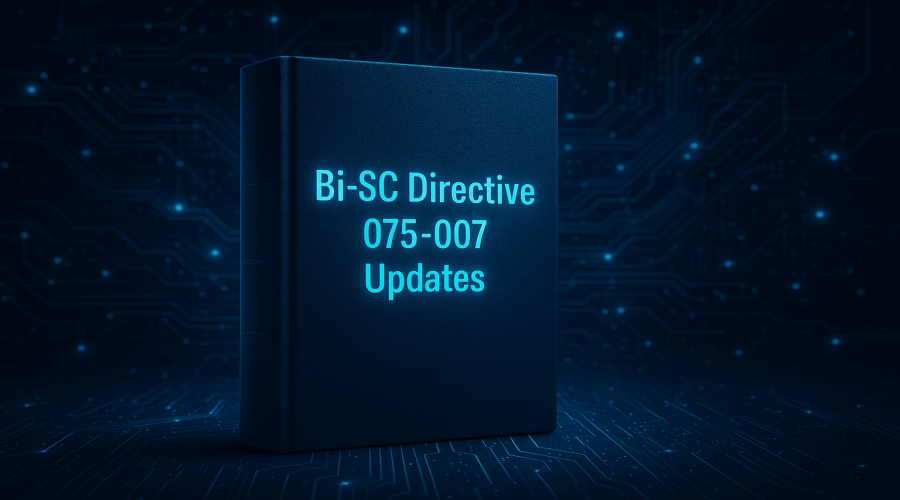
A Comprehensive List of Changes in NATO Education & Individual Training
The updated Bi-SC Directive 075-007 introduces substantial changes to the way NATO plans, delivers, certifies, and evaluates Education and Individual Training (E&IT). These revisions reflect a sharper focus on performance-based learning, resilience, digital delivery, and robust Quality Assurance (QA) processes.
This article offers a detailed summary of the most important updates, organized by topic for easy navigation.
📌 Policy & Structural Realignments
Policy Reference Update: The directive now aligns with 458/4, replacing the older 458/3 reference, as well as 75-002 (2023).
Terminology Adjustments:
“SAGE” → SGE (SACEUR’s Guidance on Education, Training, Exercise and Evaluation).
“e-ITEP” → NDTMS (NATO Digital Training Management System).
Rescinded Documents:
Bi-SCD 075-010 (METT) (2017): Now fully integrated as Chapter 10.
Interim Guidance to ETFs regarding ADLs (2020): Withdrawn; updated guidance on online and blended learning due by 18 December 2026.
New Figure: A clear hierarchy of NATO E&T policy and directives is now included (Figure 3).
📚 Course Certification & Lifecycle Management
Course Certification Process
ETOC Entries: Courses submitted for certification must initially exclude "NATO" from the title. This can be added after successful certification.
Certification Flow:
Updated during Requirements Review before the ADC.
Requirements captured in DAP may trigger CCD updates.
CCDs final review by QA Team of Experts after DH and lastly approval by DCOS MDFD through a formal certificate.
DH Responsibilities: Certify course alignment with performance requirements and pilot completion; maintain CCDs.
ETF Responsibilities: Develop and maintain CCD III, monitor instructional delivery, support content development.
Re-Certification and CCD Management
Validity Period: Courses are certified for a maximum of 3 years.
Mandatory Review: Courses certified prior to 31 Dec 2023 must be reviewed and aligned with updated CCDs by 18 Dec 2026.
Non-compliance Risk: Courses not re-certified may be downgraded to “listed” status in ETOC.
🧠 Instructional Design & Delivery Improvements
Analysis Phase
New Focus: Shift from task-based to performance-based analysis
Training Needs Analysis (TNA):
Structured around job roles (CCD II) and current personnel (CCD III).
Clarified distinction between Target Audience (TA) and Training Audience.
Scalars Introduced:
Define how learning objectives (POs/ELOs) are developed from performance requirements.
Included in new examples and templates (Annex H & I).
Design Phase
Learner-Centered Approach: Emphasizes flexibility, interaction types, and individualized learning.
Media Selection & Technology Use: Better guidance for digital and hybrid environments.
CCD Development:
Clear process for managing multiple delivery modes (e.g., residential and online).
Requires separate CCDs to maintain coherence in learning outcomes.
Development Phase
New Additions:
Guidelines for media development, resource estimation, and supplemental materials.
Management of pilot iterations (planning, data collection, follow-up).
Expanded assessment practices: diagnostic and performance-based formats.
🚀 Course Implementation & Evaluation
Implementation Enhancements
Job Description Updates:
Course changes must be reflected in JD updates via DAP and coordinated with local J1s.
Pilot Courses:
Can issue “Pilot Completion” certificates if all POs are met.
Official NATO certificate issued retrospectively once certification is granted.
Evaluation Phase
Annual Course Review (Para 9-5.c):
Covers all course iterations.
Supports trend analysis and informs updates to CCD III and courseware.
Post-Course Reviews (Para 9-5.d(3)):
Now recognized as a formal trigger for CCD and courseware changes.
Institutional Review:
Now explicitly linked to the Annual QA Report cycle.
🎓 NATO-Provided Courses – Clarified Definition
The term “NATO-Provided Course” is now formally defined to include:
NATO-Approved courses – highest priority for SME support and funding.
NATO-Selected courses – still meet NATO-specific training requirements.
This distinction clarifies expectations and informs certification, resourcing, and course visibility within ETOC.
🧾 Quality Assurance (QA) – A Step Forward
New NATO QA Standard (Annex E)
Standard 2.1.2: "The ETF has resilience plans in place that ensure the continuity of key NATO and other essential training solutions during disruptive incidents."
This addition acknowledges the need for operational continuity in unpredictable environments—such as cyber threats, pandemics, or geopolitical disruptions.
Merged Standards
Standard 1.2.3 (personnel participation in NATO activities) was merged into 3.2.2 under Area 3 - Contribution to NATO.
The total number of NATO QA standards remains 31.
Annex E Enhancements
Appendix 1: Practical guidance on writing the Self-Assessment Report (SAR)—includes scope, timing, and structure.
Appendix 2: Explains ACT recognition of institutional accreditation and NATO-provided course status.
Annex D – QMS Support
QA Policy Template – Includes mandatory, advisory, and best practice components.
Checklist for policy review and validation.
Annual QA Report Template – Standardized format for ETF reporting (now hosted on the QA Hub).
Monitoring Responsibilities
Pilot and routine monitoring: Now clearly assigned to either the Department Head or External OPR, depending on content ownership and SME availability.
Course conduct monitoring is part of the core QA cycle and linked to certification status.
Clarifies Team of Experts vs. Pool of Experts roles.
📎 Annex Overview (Quick Reference)
| ANNEX | KEY CONTENT |
|---|---|
| D | QMS templates, QA policy structure, AQAR |
| E | 31 Quality Standards, SAR & recognition guidance |
| F | Visual: SAT process and QA linkages |
| G | Proficiency Levels (PL 100 & 400) guidance |
| H–K | Scalars, CCD templates, PO/ELO development |
| M | CCD I template + updated course certification workflow |
| N | Pilot iteration planning and execution |
| O | Monitoring guidelines for DH and External OPR |
Final Thoughts
The updated Bi-SC Directive 075-007 is more than a refresh—it’s a strategic modernization of how NATO defines, delivers, and governs E&IT across the Alliance. With clearer roles, digital-ready processes, and enhanced QA mechanisms, the directive supports a more agile, learner-focused, and accountable training environment.
All Education and Training Facilities (ETFs), Discipline Holders (DHs), and QA professionals are encouraged to:
Review the updated annexes and templates on the QA Hub
Align course documentation with the new CCD guidance
Ensure QA systems reflect the revised standards.
For questions, templates, or support implementing these changes, contact the NATO QA Team or visit the QA Hub`s Archive.

Comments
Update and Upgrade.
True
In reply to Update and Upgrade. by Konstantinos_K…